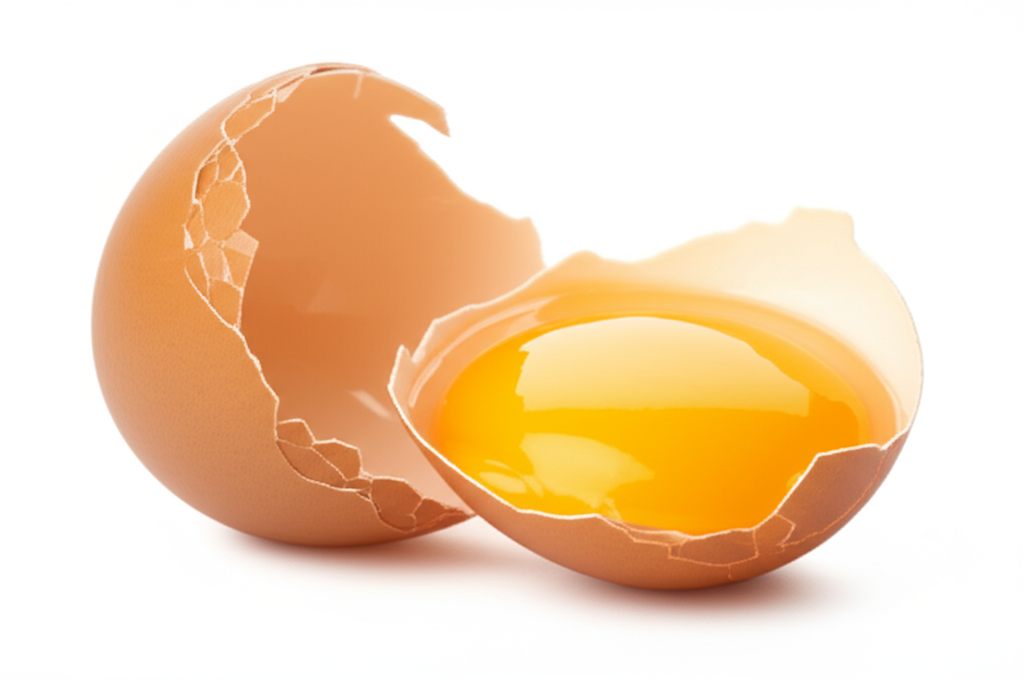Abstract
For many poultry breeding companies and breeder farm managers, nothing is more frustrating than tracking fertility through the roof—only to find hatchability rates refusing to follow suit. The eggs are fertile on paper. The male-to-female ratios are spot-on. The environment seems controlled. And yet, hatch rates lag far below projections. If this sounds familiar, you’re not alone. Across regions, breeder operations are quietly facing an issue that doesn’t show up in basic KPIs: fertile but non-viable eggs.
Let’s explore the hidden biological and nutritional gaps that might be undermining embryo viability—many of which remain underestimated in daily farm practices.
1. Microbial Transfer Through the Egg Yolk: The Invisible Legacy: The health of the embryo begins long before fertilization. In fact, gut health in the breeder hen has a direct influence on the microbial landscape of the yolk. Pathogens or imbalanced gut flora in hens can transfer via the yolk sac, subtly affecting embryo health without any outward signs in the hen or the egg shell. This microbial legacy can reduce embryonic resilience, making the developing chick more prone to death during incubation.
Tip: Building a stable, resilient gut environment in breeders isn’t just about feed efficiency—it’s about reproductive success.Supporting breeder gut health with targeted microbial stabilizers and fermentable extracts can reduce vertical transfer of harmful bacteria into the egg.
2. Subclinical Mycotoxins: Undermining Fertility from Within: Breeder diets are often composed of high-density cereals and protein sources—prime real estate for mycotoxins, especially in tropical storage conditions. Even low levels of mycotoxins like DON, T-2 toxin, or ochratoxin can damage ovarian tissue, reduce semen viability, or affect embryonic development.Worse, these mycotoxins often escape routine detection because they don’t immediately reduce feed intake or egg production.
Tip: A proactive mycotoxin mitigation strategy isn’t optional—it’s essential, even when the feed appears “clean.”Using feed strategies that combine immune protectants with broad-spectrum mycotoxin binders has shown to minimize embryonic developmental failures, even in seemingly low-risk batches.
3. Oxidative Stress: The Silent Reproductive Thief: Breeder birds undergo intense metabolic and hormonal activity during peak laying periods. This accelerates oxidative stress, which, if not buffered properly, can impact egg quality, shell integrity, and internal embryo viability. Antioxidant status is often overlooked, especially once the basic vitamin E and selenium boxes are ticked. But a deeper look reveals that dynamic antioxidant support—adapted to life stage and stress exposure—can tip the balance between fertile eggs that hatch and those that fail.
Tip: Antioxidant strategies should evolve with the bird, not remain static from week 20 to 65.
4. Male Factor: The Forgotten Half of the Equation: It’s easy to assume the males are doing their job if fertility is high—but semen quality and sperm viability play just as critical a role in determining hatchability. Heat stress, chronic gut inflammation, or even trace mineral imbalance in males can quietly degrade semen quality without showing up in fertility percentages.
Tip: Breeder males require tailored care—not just for libido, but for long-term sperm quality under stress.Natural compounds that modulate gut and reproductive axis health in breeder males can quietly improve sperm viability and hatch performance.
5. In-Ovo Immunity: The New Frontier: Embryos don’t just grow inside the shell—they interact with the internal immune signals passed from the hen, including maternal antibodies and microbial signatures. The robustness of this “immune inheritance” can define how well a chick survives the first 7 days of life.
More and more evidence suggests that maternal nutrition and gut environment directly shape the immune readiness of the chick.
Tip: Supporting maternal gut and immune health means stronger, more viable chicks from the moment of pip.Enhancing maternal microbial and metabolic health—through bio-actives that influence the gut–immune axis—can directly influence first-week chick survival.
Final Thoughts: Fertility Is Not the Destination
High fertility is a good sign—but it’s only half the story. Breeder operations must begin to think beyond fertilization, zooming out to consider:
- The microbial, oxidative, and toxicological conditions affecting the embryo
- How maternal signals shape chick quality
- The subtle factors in male health and sperm quality
When these hidden forces are accounted for, hatchability often begins to climb—not because of magic—but because the biology finally gets what it needs. If your fertile eggs aren’t hatching, maybe it’s time to stop looking only at the shell—and start listening to the biology inside.

